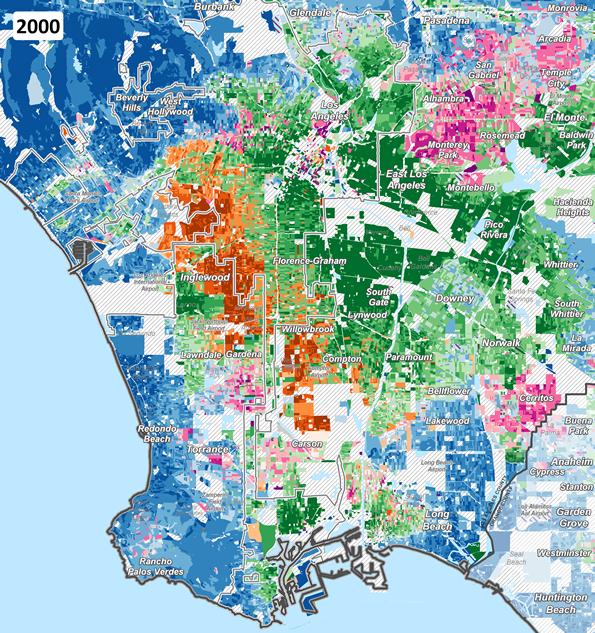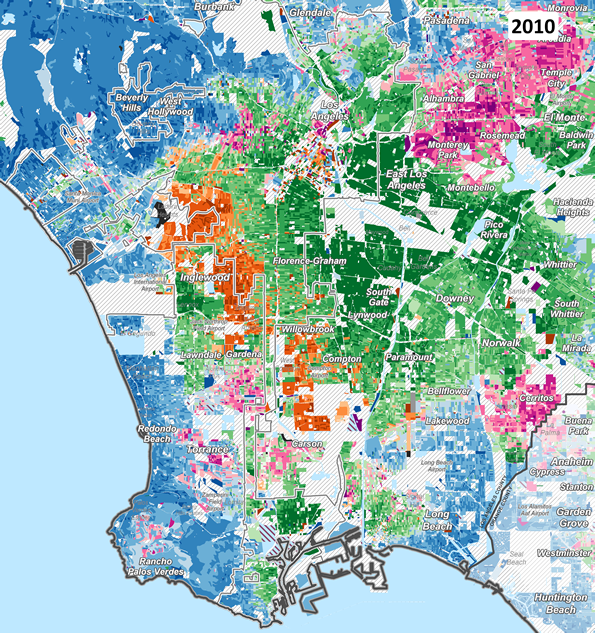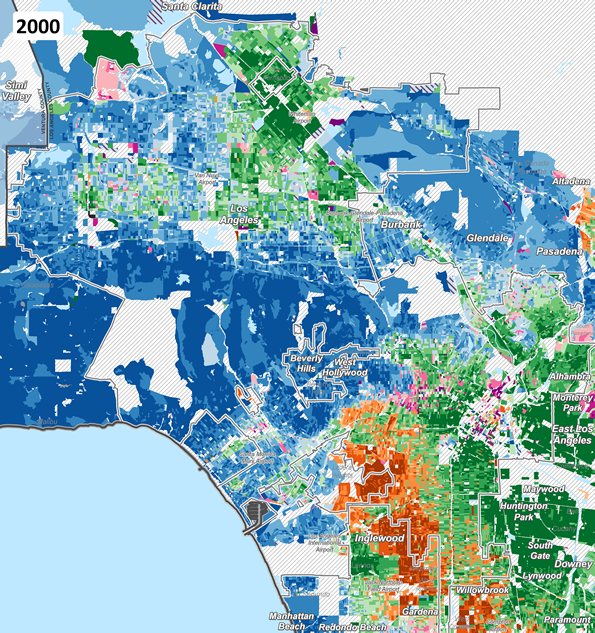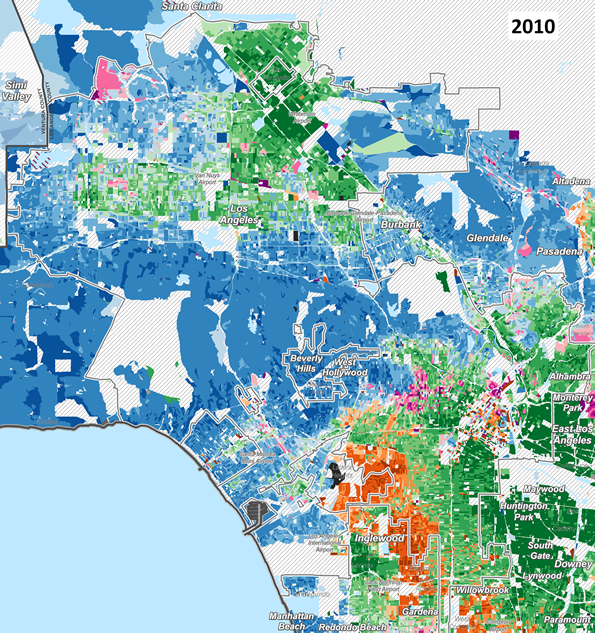major urban regions: 2000 to 2010
(LA, Chicago, Boston, Houston, Washington DC, San Francisco, Philadelphia, Baltimore, Phoenix, Detroit, Miami, Atlanta, Charlotte)
The maps below compare changing race/ethnicity patterns in the last decade, Census block by Census block, across some of the most populated urban regions in the U.S. (New York City is mapped in more detail here).
Also try our zoomable maps, allowing you to zoom in to specific blocks, click on individual blocks to see population details, and easily move around these regions -- all while sliding back and forth to compare 2000 and 2010 race/ethnicity patterns on a block-by-block basis. Click the image to launch the maps!
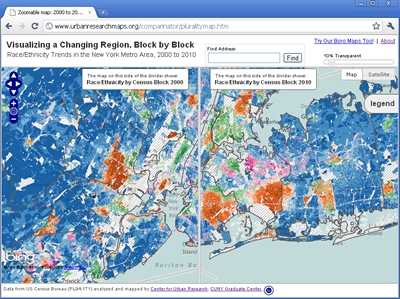
How to use the maps
The maps below use a relatively new interactive technique to easily compare images (in this case, maps) from one time period to another. The maps "on the left" show the block-level race/ethnicity plurality patterns based on the 2000 Census. The maps "on the right" show the plurality patterns based on the 2010 Census. The legend next to the maps describes how the colors represent population percentages in each Census block. Special thanks to www.catchmyfame.com for the code to implement the comparison tool.
IMPORTANT NOTE: In blocks where the racial/ethnic group constitutes a plurality with a relatively low percent of the population, the block is shaded with a lighter color on the map. This indicates a more mixed population from a race/ethnicity perspective. Blocks with higher plurality percentages (darker shading on the maps) have a more homogenous population dominated by a single race/ethnicity group.
Note that mapping the plurality patterns may somewhat overstate the level of racial/ethnic segregation in some areas of the city. Even where the population is mixed, the maps only show one color shading. Another approach, such as "dot density" makes it easier to see the mix of population groups (for example, see the New York Times maps here). But it is easier to show change in density over time with color shaded Census blocks than with dots. We encourage your feedback and suggestions for improvement along those lines.
Click and hold the green slider in the middle of the map to drag the slider to the left or right so you can easily reveal the changing population patterns between 2000 and 2010.
- Dragging to the right reveals the 2000 map.
- Dragging to the left reveals the 2010 map.
- Click the links below each map to quickly show one or the other.
Also try our zoomable maps, allowing you to zoom in to specific blocks, click on individual blocks to see population details, and easily move around these regions -- all while sliding back and forth to compare 2000 and 2010 race/ethnicity patterns on a block-by-block basis.
The maps and data provided by CUR provide a window into many different narratives and analyses of demographic trends throughout the city. We encourage you to use our materials to illustrate and examine these stories by repurposing our maps and data for your own websites, blogs, publications, and studies. Please contact us if you have any questions about our work, or if we can help in any way.
The data
Each state's shapefile shapefile with 2000 and 2010 population attributes and plurality codes can be relatively large (some are more than 1 GB). If you would like a copy of the data for your research purposes, please contact the Center for Urban Research. If you use the data in your work, please credit the "Center for Urban Research, CUNY Graduate Center" in your work. Thank you.
For more information, contact the CUNY Mapping Service (cunymapping [ at ] gc [ dot ] cuny [ dot ] edu at the Center for Urban Research, CUNY Graduate Center. Thanks!
"BEFORE AND AFTER" MAPS
Comparing predominant race / ethnicity by block in 2000 & 2010
- LA (south)
- LA (north)
- Chicago
- Houston
- Boston
- San Francisco
- Philadelphia
- DC
- Baltimore
- Phoenix
- Detroit
- Miami
- Atlanta
- Charlotte

